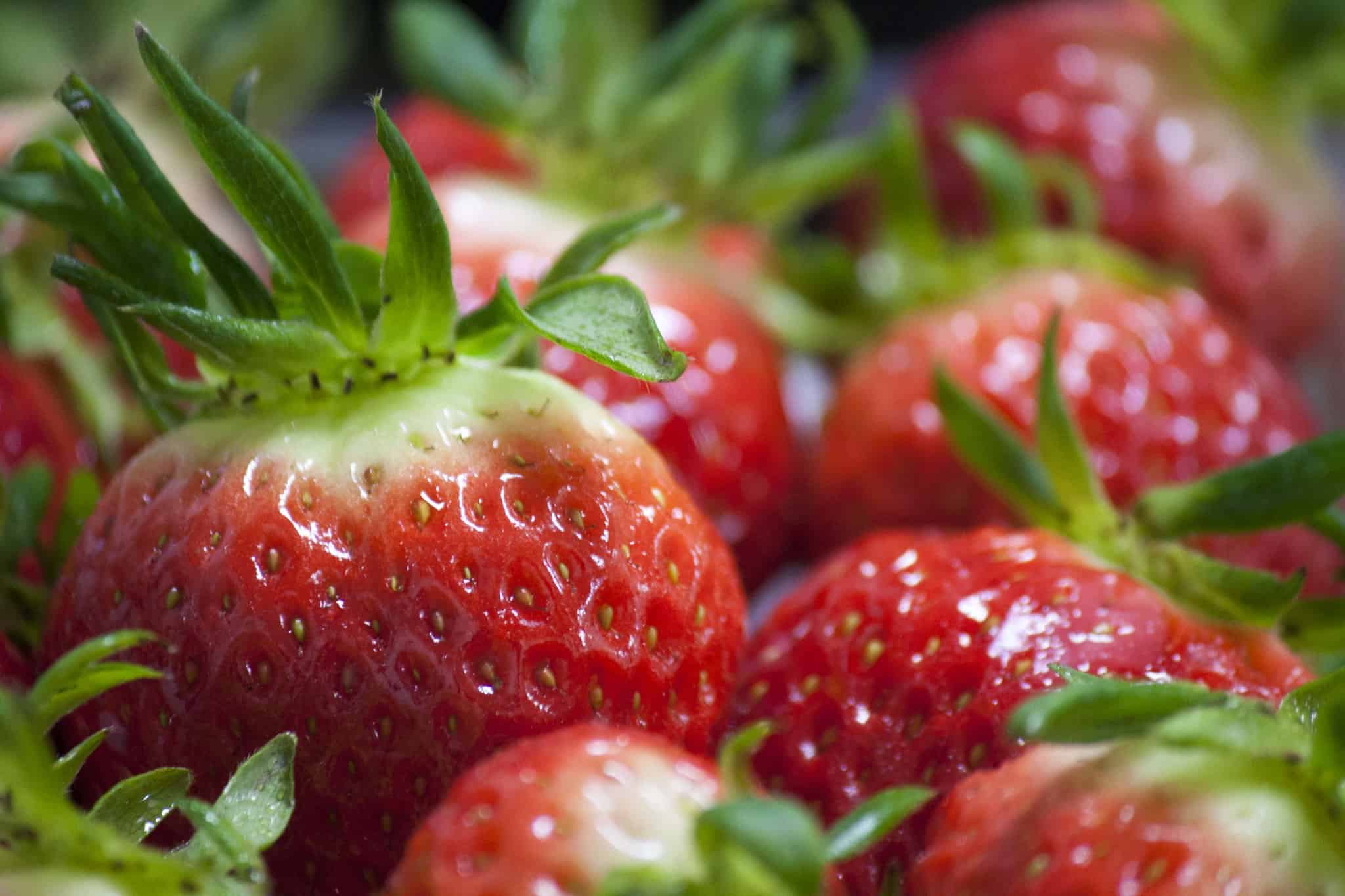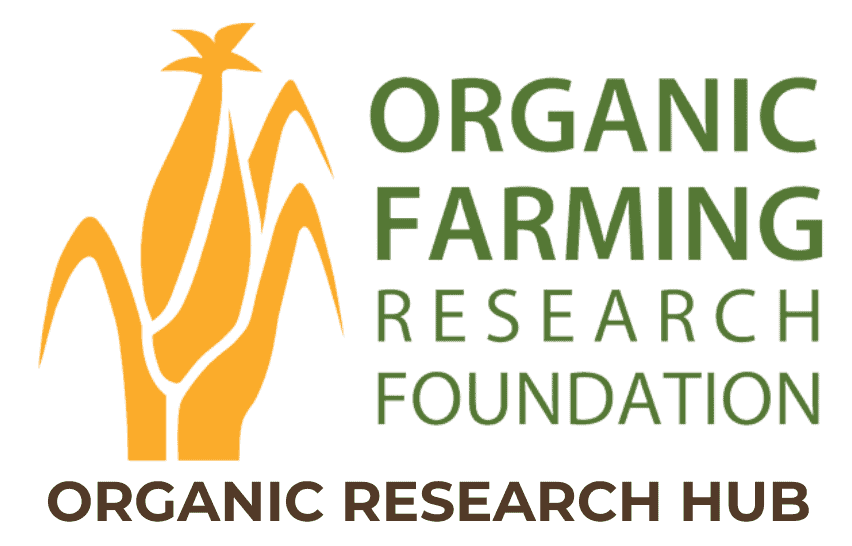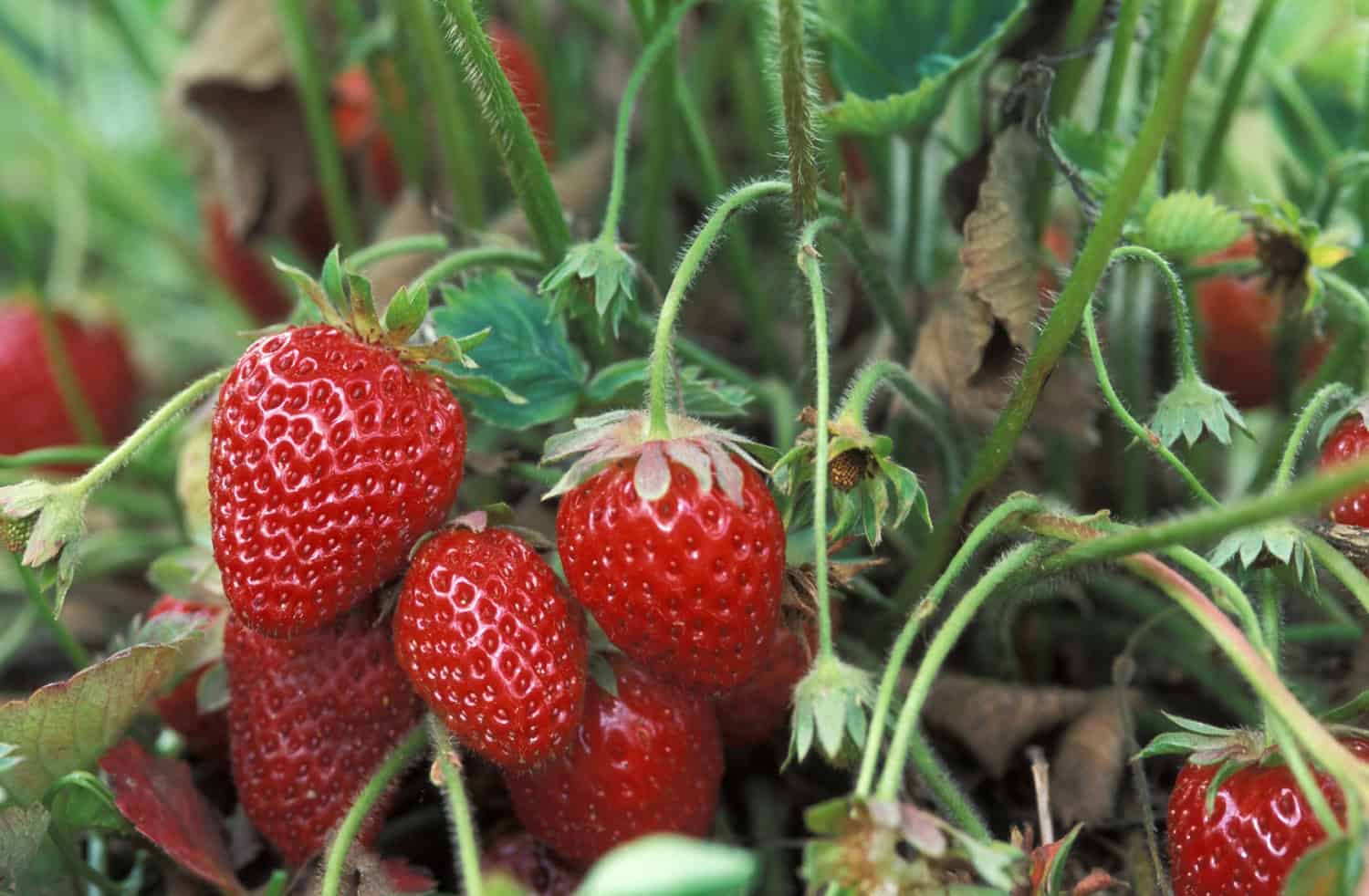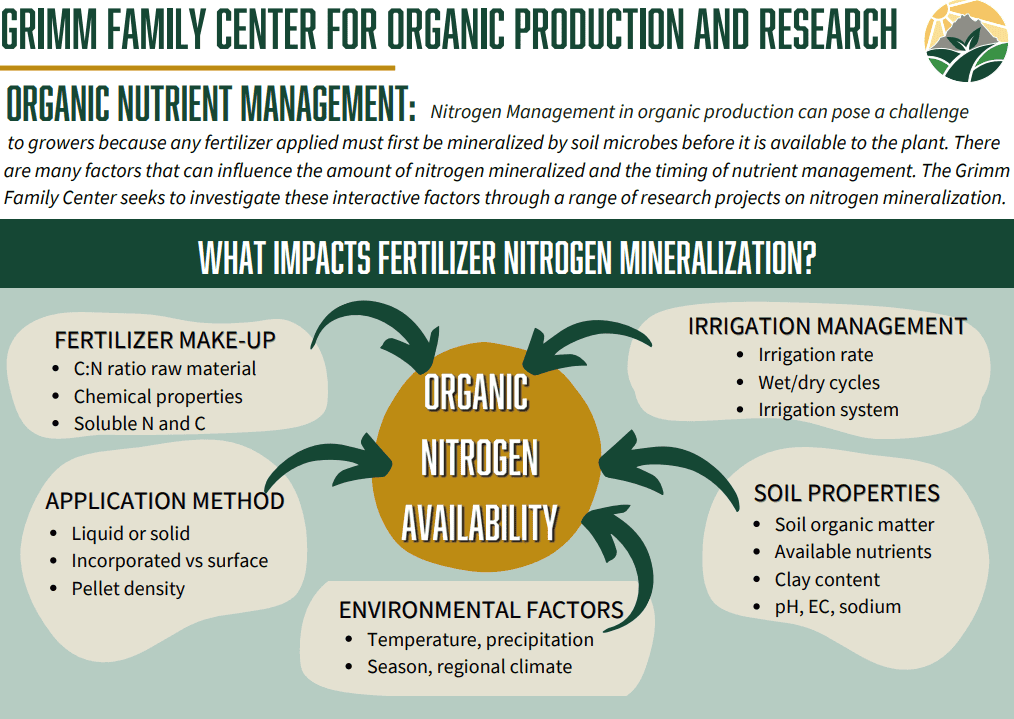Nutrient analysis of organic strawberries: effect of cultivars and mycorrhizal inoculations
Joji Muramoto, University of California, Santa Cruz

This study investigated nutrient levels in organically grown strawberries, addressing a gap in research as tissue analysis is common for conventional strawberries but not organic ones. The goals were to assess nitrogen (N) performance of California strawberry types grown organically, check if a commercial arbuscular mycorrhizae (AM) product could improve mineral nutrition (especially phosphorus), and help organic strawberry farmers manage fertility.
In 2000, experiments were set up on two organic farms in California, testing five strawberry types (Aromas, Chandler, Diamante, Pajaro, and Seascape) with and without AM. Leaves were sampled three times: during early flowering (March 2001), mid-harvest (May 2001), and late-harvest (July 2001). Leaf blades were tested for total nitrogen (T-N) and total phosphorus (T-P), while petioles were tested for nitrate-N (NO3-N).
Leaf T-N and NO3-N were high early on, then decreased during harvest. Aromas and Seascape generally had the highest T-N and NO3-N, while Pajaro had the lowest. Differences in leaf N were linked to how well the plants produced fruit. T-N in leaf blades during flowering was strongly linked to total fruit yield.
AM didn’t significantly affect T-P or N levels. T-P levels were generally sufficient, likely because the soil already had enough phosphorus. This might explain why AM didn’t have a big impact.
Region
Western
Topic
Crop Nutrient Management
Category
Vegetables/Fruits
Date Range
2000 and earlier
Funding Amount
$4,710
Funding Year
1997Location
Santa Cruz, Salinas, California
Collaborators
Carolee Bull, USDA/ARS, Salinas, CA
Carol Shennan, Stephen Gliessman, and Jim Leap, University of California, Santa Cruz
Dick Tamangi and Paul Kohatsu, Spence Organic Field, Salinas, CA



